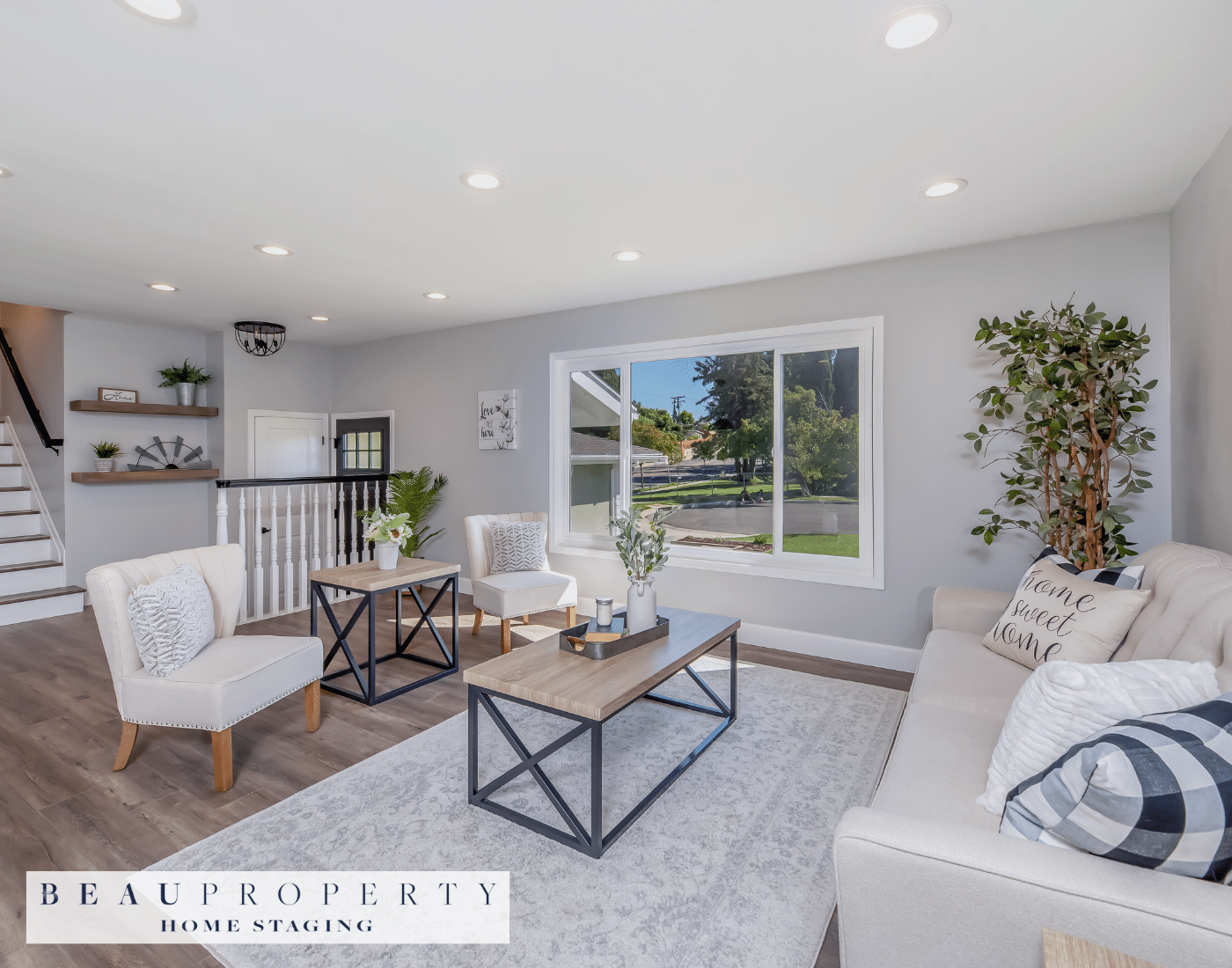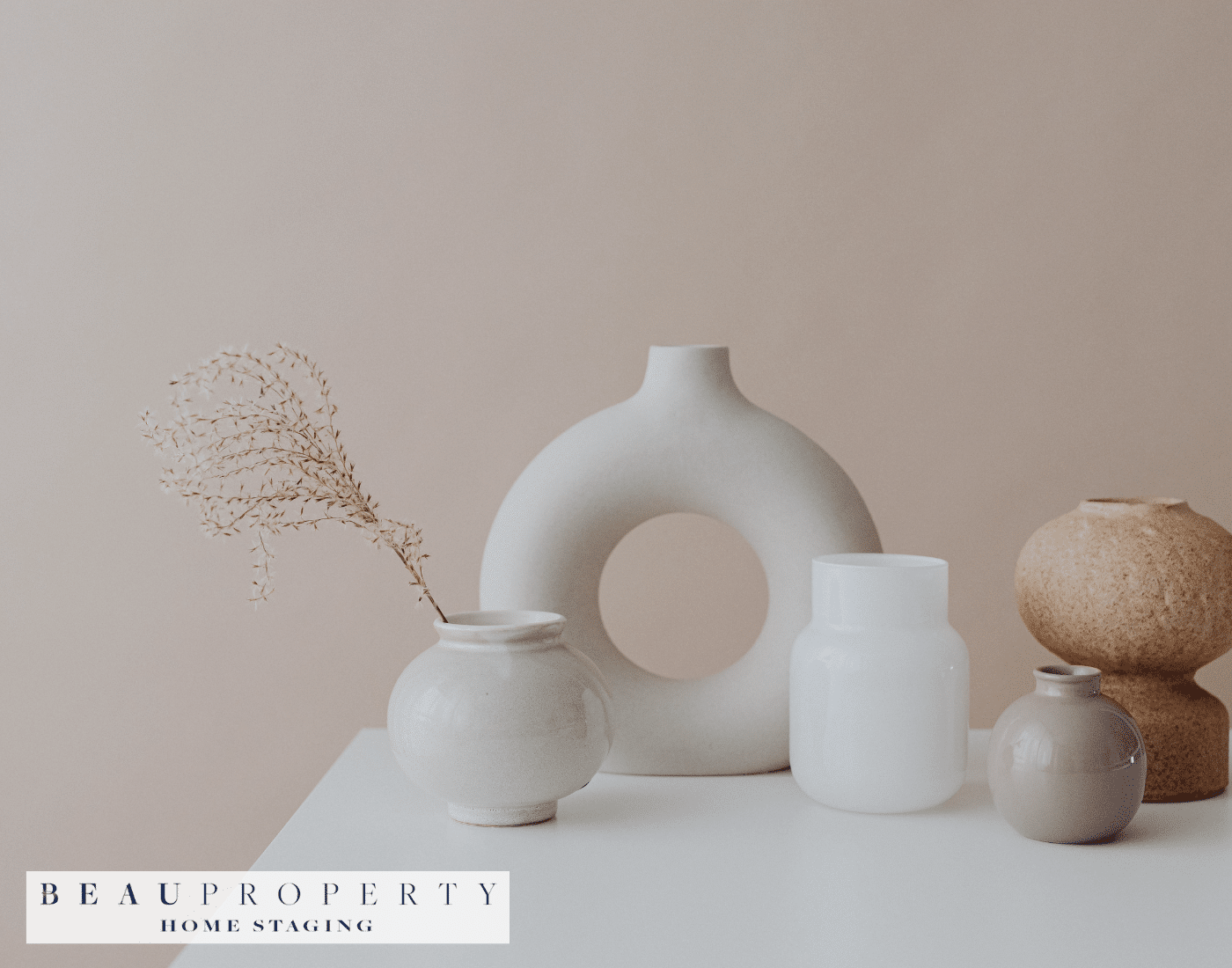Introduction to Common Home Staging Mistakes
Home staging is crucial for attracting buyers and securing a quick sale in today’s competitive housing market. However, many sellers fall into the trap of common home staging mistakes, which can sabotage their efforts. Understanding and avoiding these frequent staging errors is key to presenting an inviting, sale-ready home.
The Impact of Avoiding Common Home Staging Mistakes
Avoiding common home staging mistakes is essential for captivating potential buyers. In an era where buyers extensively preview listings online on platforms like Rightmove and Zoopla, first impressions are crucial. High-quality photographs and virtual tours that showcase a home’s strengths, rather than its flaws, are vital.
By steering clear of typical staging blunders related to clutter, odours, paint colours, and furniture placement, sellers can significantly enhance buyer interest and offers.
Mistake #1: Overlooking the Photographic Appeal
The Importance of Staging for Photography
High-quality listing photos are often the first impression buyers have of a property. When staging, it’s important to consider how each room will photograph. Arrange spaces to highlight selling points like spacious layouts and natural light, avoiding common home staging mistakes that can detract from these features.
Strategic Furniture Arrangement
Furniture arrangement directly impacts how a home photographs. Items should be positioned to lead the eye through the most flattering angles of a room without appearing cluttered or cramped. For example, pull chairs out from walls to create a sense of movement and energy. Remove excess furniture from tight spaces. Style coffee tables and shelves attractively but minimally. Check sight lines to avoid blocking windows or focal points. With some strategic furniture rearrangement and decluttering, homeowners can transform ordinary spaces into photogenic showstoppers.
Mistake #2: Excessive Furniture
Having too much furniture in a staged home is a common mistake that can make spaces feel small, cramped, and cluttered. According to the 3 foot 5 foot rule in home staging, furniture should be arranged based on how a room is viewed – up close during tours and from a distance in photos. Having excessive pieces crammed together violates this principle.
Creating Open and Inviting Spaces
Overcrowded rooms can feel uninviting. By removing non-essential furniture pieces, stagers can open up floor space, making rooms appear larger and more welcoming. Thoughtful decluttering and furniture placement are key to avoiding this common staging mistake.
Strategic Decluttering Opens Up Rooms
Stagers should critically evaluate each furniture item when preparing a home for sale. Ask – does this coffee table really need to be here? What about that extra armchair in the corner? By removing non-essential pieces, the remaining items can be thoughtfully arranged to maximise open floor space. This strategic decluttering helps rooms feel more spacious.
Encouraging Conversational Layouts
With a pared down furniture collection, stagers can create inviting conversational layouts in living areas. For example, placing a sofa opposite one or two chairs, with an open pathway in between, sends the message – come, sit down and relax here. This is more enticing than wall-to-wall furniture that blocks free movement.
Mistake #3: Neglecting Household Odours
Addressing Common Odours
Unpleasant odours can have a significant negative impact on potential buyers’ perceptions of a home. Even mild smells that homeowners may have become desensitised to over time can turn off prospective buyers and diminish enthusiasm for an otherwise attractive property.
Address smells from pets, mold, and cooking through deep cleaning. Use light, appealing air fresheners strategically to enhance the atmosphere during showings. The sense of smell is closely tied to memory and emotion. Bad smells can trigger visceral reactions of disgust, creating an instant negative bias against a home.
Eliminating Odours Through Deep Cleaning
Thorough deep cleaning is essential for eliminating stubborn household odours. Pay special attention to soft furnishings like carpets, upholstered furniture, curtains and bedding where smells can linger.
Steam cleaning carpets and washing down hard surfaces with vinegar are effective DIY odor removal tactics. For severe pet urine odours, an enzymatic cleaner specifically formulated to break down the compounds causing smells should be used.
Masking Odours With Air Fresheners
While addressing the root causes of smells through deep cleaning is ideal, air fresheners can provide an effective masking effect on open house days. Plug-in or spray air fresheners with light, universally appealing scents like linen, lavender or green tea are best for home staging. Avoid strong, polarising fragrances.
Be strategic with air freshener placement near odor hot spots like litter boxes or the kitchen. Time the use of air fresheners to coincide with the hours just before and during showings.
Keeping bathrooms smelling fresh with scented candles or essential oil diffusers is also recommended.
Mistake #4: Cluttered Personal Decor
Displaying too many personal knick-knacks and collectibles can make a home feel cluttered and distract potential buyers from seeing the home’s best features. While you may have sentimental attachment to your souvenir shot glasses or extensive thimble collection, most buyers will not appreciate those items.
Simplifying Decor
When staging a home, the goal is to create a universally appealing backdrop that allows buyers to imagine the space as their own. Covering every surface with personal memorabilia makes that difficult. Consider packing away at least half of your knick-knacks, collectibles and family photos when showing your home. This helps create a more neutral canvas.
Create Open Surface Area
Strategically limiting decor items also opens up surface area throughout the home. Clear off most flat spaces like mantles, shelves, side tables, countertops and dressers. Leaving these areas open and uncluttered makes rooms appear larger and feel less cramped. Buyers will appreciate the extra space to set down personal items when touring.
Use Neutral Decor
Aim for neutral, simple decor pieces rather than loud, eclectic items that reflect your personal style. Vases, candles, bowls and baskets in natural hues help a space feel clean and open without detracting focus. Greenery and flowers also make affordable, non-permanent upgrades that add pleasant pops of colour.
Mistake #5: Dark Paint Choices
Using too much dark paint when staging a home can make spaces feel smaller and gloomier. Dark colours like black, deep purple or navy blue tend to visually shrink a room. They absorb light rather than reflect it, emphasising the boundaries of a space.
Home buyers prefer bright, airy environments with a sense of spaciousness. So it’s best to avoid painting large surfaces dark colours when preparing your home to sell. Dark accent walls may be stylish in theory but often fall flat with potential buyers.
Opting for Lighter Hues
Instead of dark hues, choose light or neutral paint colours when staging. Soft whites, greys and tans make rooms appear larger. They also create a clean, bright backdrop that appeals to the widest range of buyers.
If you want to inject colour, opt for pale pastels or muted earth tones. Soft sage green, sky blue and warm beige are safe staging choices. Remember – the goal is to highlight your home’s best features, not make a daring decor statement.
Tips for Choosing Paint Colours
- Repaint rooms in neutral off-white or light grey
- Use colour to define spaces while keeping most surfaces light
- Highlight architectural details with pale accent colours
- Avoid painting ceilings dark colours
- Add brightness with reflective white trimwork
By keeping your staging paint colours light and airy, you’ll create a universally appealing backdrop for buyers to envision their future home.
Mistake #6: Misplaced Furniture
When staging a home, it can be tempting to push all the furniture up against the walls to open up floor space. However, this common mistake can make rooms feel cold, uninviting, and cavernous. Instead, pull furnishings away from the perimeter to create cozier conversation areas and a better sense of balance.
Importance of Conversational Seating
Pushing all furniture against the walls leaves an empty void in the center of a room. This makes the space feel vast and impersonal. By contrast, pulling seating into the middle creates an intimate area for people to gather. Sectionals, sofas, and chairs should face each other to encourage interaction. This gives the room a welcoming ambiance where potential buyers can envision entertaining and spending time with loved ones.
Arrange Furniture to Utilise
All Space In addition to feeling cold, rooms with all furnishings against the walls fail to utilise the available area. Large empty patches can make buyers perceive the space as smaller than it is. Pulling furnishings toward the middle balances out the room and maximises perceived square footage. Vary heights and sizes of decor as well. Using these techniques makes rooms feel expansive yet cozy at the same time.
When staging, resist the urge to just push everything out of the way. Thoughtfully arrange furnishings to create warm, multifunctional spaces buyers are sure to fall in love with.
Mistake #7: Inadequate Lighting
Lighting plays a crucial role in home staging by setting the overall mood and ambiance of a space. Dim, dark rooms will likely turn off potential buyers, while bright, well-lit spaces tend to feel more welcoming and appealing. Maximising natural and artificial light sources should be a key priority when preparing a home for listing.
Let the Sunshine In
Making the most of natural light involves strategic window placements to allow sunlight to permeate the home’s interior. Large picture windows, skylights, solar tubes, and glass doors are excellent ways to usher in natural light. Keeping windows clean and free of heavy drapes or blinds also allows sunlight to filter into a space. Painting walls white or light colours helps bounce and amplify natural light as well.
Supplement with Lamps and Fixtures
Even with ample natural light, staged homes still require artificial lighting sources to create a warm, inviting mood during nighttime showings or cloudy days. Strategically placed floor lamps, pendant lights, recessed lighting, and accent lighting help highlight a home’s best features. Outdoors, landscape lighting and exterior spotlights showcase a home’s curb appeal after dark. The key is to use a combination of natural and artificial light to make a home shine at all times of day.
Avoid Dark and Gloomy Spaces
Rooms bathed in shadow or darkness should be avoided at all costs during staging. Heavy window treatments that block sunlight, burned out light bulbs, and dark paint colours all contribute to a gloomy, unappealing environment. Fix any non-working light fixtures, open up the windows, paint the walls a lighter shade, and add lamps to make dark spaces feel bright and airy again.
Proper lighting can make a home feel warm, inviting and spacious – key selling points for potential buyers. Whether using natural light, artificial fixtures, or a combination of both, brightening up a staged home should be a top priority to maximise its appeal and marketability.
Conclusion: Navigating Home Staging with Expertise
In conclusion, avoiding common home staging mistakes is crucial for creating a lasting impression on potential buyers and achieving a successful sale. From ensuring your home photographs well to avoiding overcrowded spaces, each aspect of staging plays a vital role in presenting your property in its best light. Remember, the goal is to create an inviting, spacious, and clean environment that appeals to a wide range of buyers.
While DIY staging can be effective, it’s often challenging to view your own home objectively. This is where the expertise of professional stagers like Beau Property Staging becomes invaluable. Our team has the skills, experience, and eye for detail needed to transform your home and highlight its best features.
Elevate Your Home’s Appeal with Beau Property Staging
Are you ready to make your home stand out in the competitive real estate market? Contact Beau Property Staging today for professional staging services that avoid common pitfalls and showcase your home’s true potential. Our experts will work with you to create a bespoke staging plan that fits your budget and timeline, ensuring your property is market-ready and appealing to buyers.
Visit Beau Property Staging to learn more about our services and how we can help you avoid common home staging mistakes for a quicker, more profitable sale. Let us help you turn your property into a buyer’s dream home – get in touch now!





